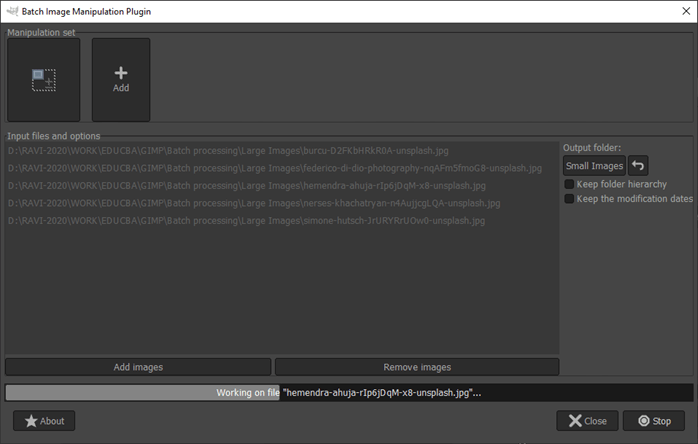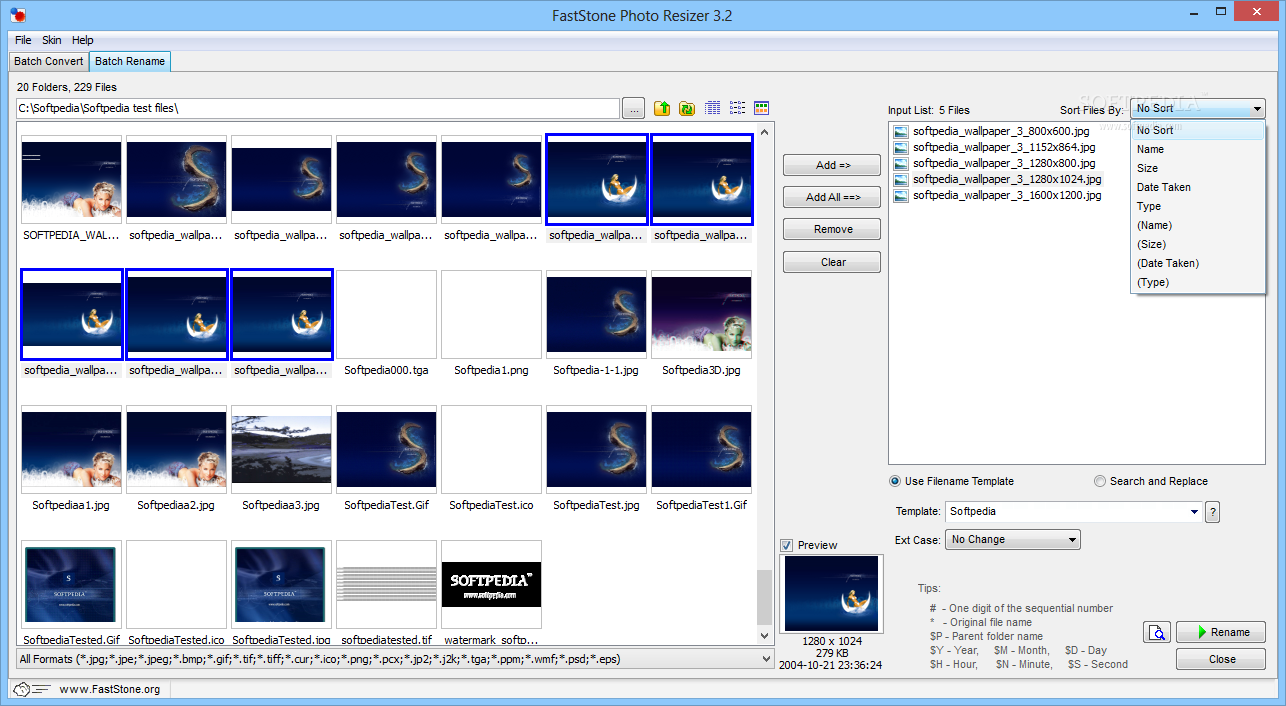

- #BATCH IMAGE RESIZER GIMP MAC OS#
- #BATCH IMAGE RESIZER GIMP INSTALL#
- #BATCH IMAGE RESIZER GIMP FULL#
- #BATCH IMAGE RESIZER GIMP DOWNLOAD#
Step 1: Now, start the GIMP program and click on File > Batch Impact Manipulation. You’ve successfully installed BIMP, you’re halfway there. Once you have downloaded the file, double-click the “gimp-plugin-bimp_win32.exe” file.
#BATCH IMAGE RESIZER GIMP DOWNLOAD#
#BATCH IMAGE RESIZER GIMP INSTALL#
Standard GIMP doesn’t have a batch-cropping option, but you can install a plugin to automate this task. The basic interface and functionality of GIMP are similar to Adobe Photoshop, although its multiple-window interface is a bit unusual and quirky compared to other mainstream Windows software.
#BATCH IMAGE RESIZER GIMP MAC OS#
It is compatible with the most popular operating systems including Windows, Mac OS X, and Linux.
#BATCH IMAGE RESIZER GIMP FULL#
GIMP provides users with full control over their images by allowing them to customize any aspect of their photos from adding layers and text titles to creating complex masks and filters. Since then GIMP has grown into an incredibly powerful program that can be used for basic image editing tasks such as cropping, resizing, and color adjustments all the way up to more advanced functions like creating digital artwork or applying special effects. It has been around since the mid-1990s, originally created as a free alternative to commercial image manipulation programs. GIMP, short for GNU Image Manipulation Program, is a free and open-source photo editing software. For me, it failed to split the three photos, while simultaneously cropping part of the adjacent photos into the output. Generally, Photoshop works well but also had several bloopers. Press “ok”, and you’ll see Photoshop run through each scanned image, cropping, rotating, and saving each individual photo into an automatically created subfolder with the name “Edited”. This takes you to a directory browser dialog. In recent versions of Photoshop, you’ll find the following item in the “File” menu:

Photoshop is the first place where you would expect a solution to exist since it is the veritable industry standard for photo editing and graphic design. I wasn’t either – but it took me a bit of googling to find a good solution, and now I want to save you the trouble and share it with you. So isn’t there an easier way? Of course, there is! You’re not the first person who wants to do this. You could manually rotate, crop, and save each photo, but this takes a lot of time.

And even if the page is straight, individual photos may be skew relative to the page since they were glued that way. Unless you have the hand-eye coordination of a surgeon, most images will also be slightly skewed. Of these, the latter is the fastest and easiest, since macro-photographs of a single photograph are tricky in terms of lighting, focus, and framing.īut here you run into another problem: you end up with tens to hundreds of scanned pages, each containing multiple distinct photographs. So your only option is photographing them individually, or whole-page scanning/photographing. Removing the photos from the album pages before scanning them is time-consuming, and may even harm them. So the only option is scanning the prints themselves. In my case (and probably in yours), the negatives of many of these photographs are unavailable. to share with family members, to protect them from degradation and loss, or just for your digital library. And you also probably want to have them in digital format – e.g. Albums with family photographs, glued to paperboard pages. Just like you, I also have old photo albums at home.


 0 kommentar(er)
0 kommentar(er)
